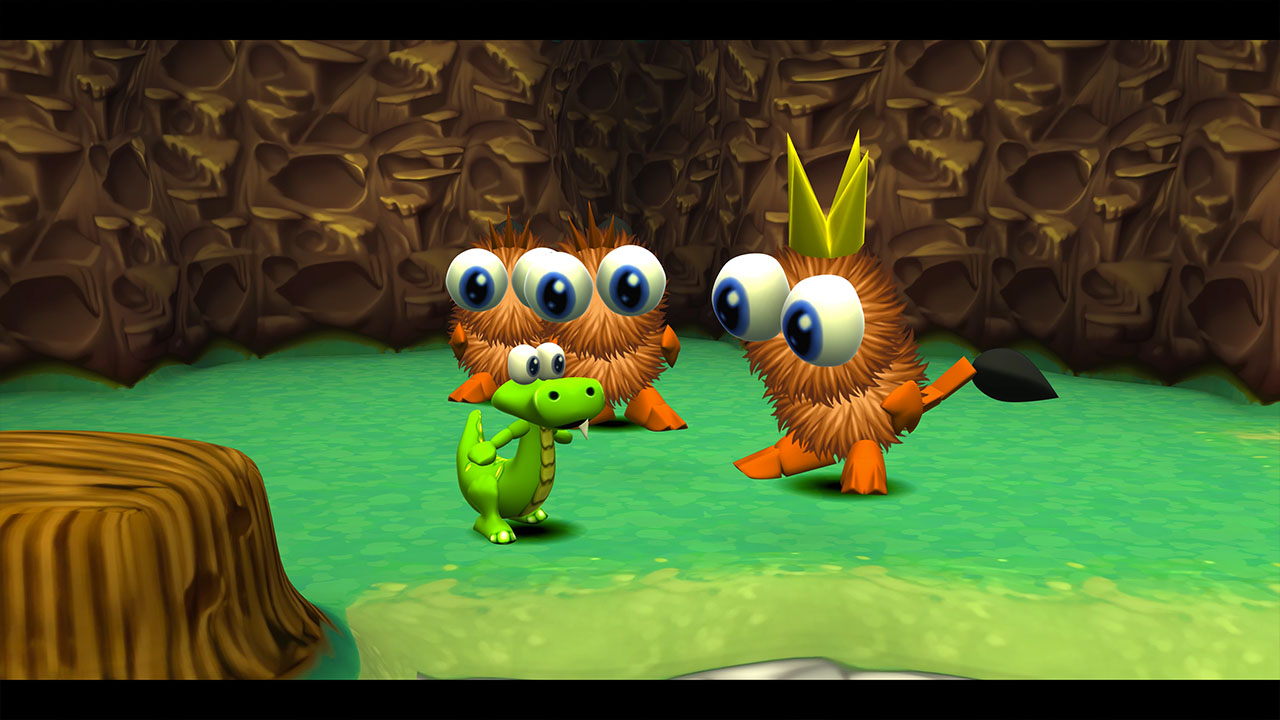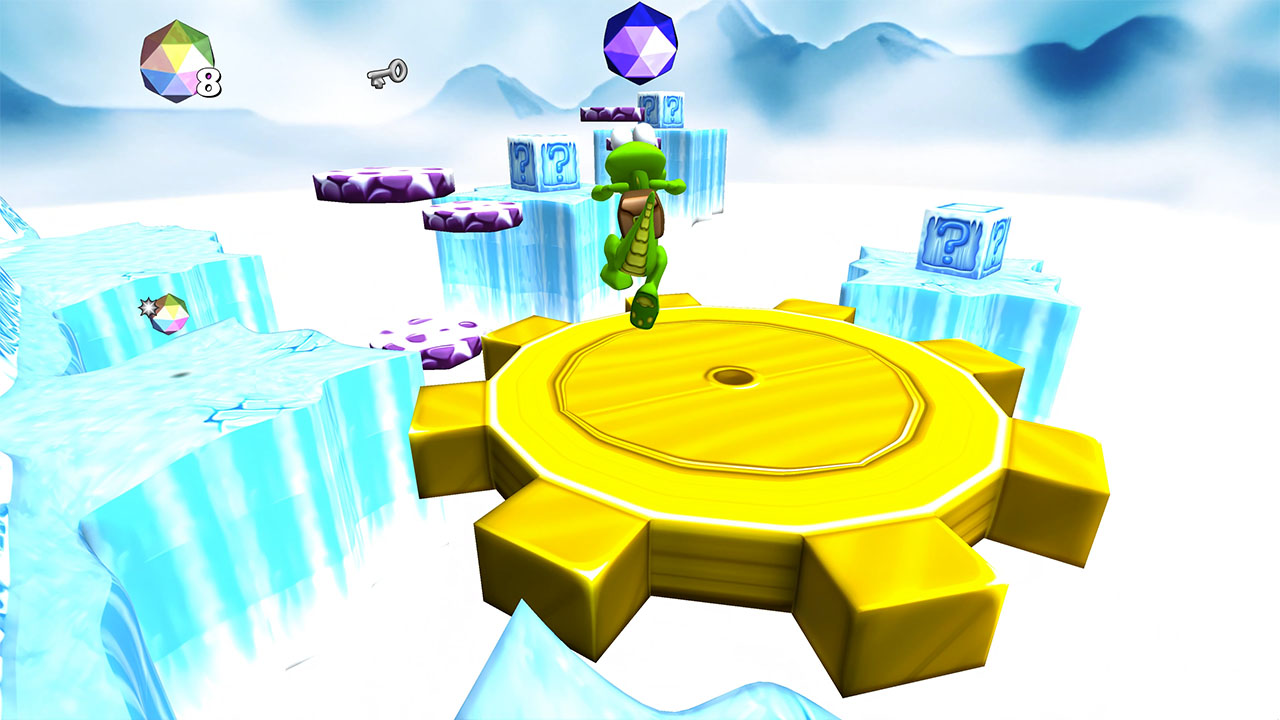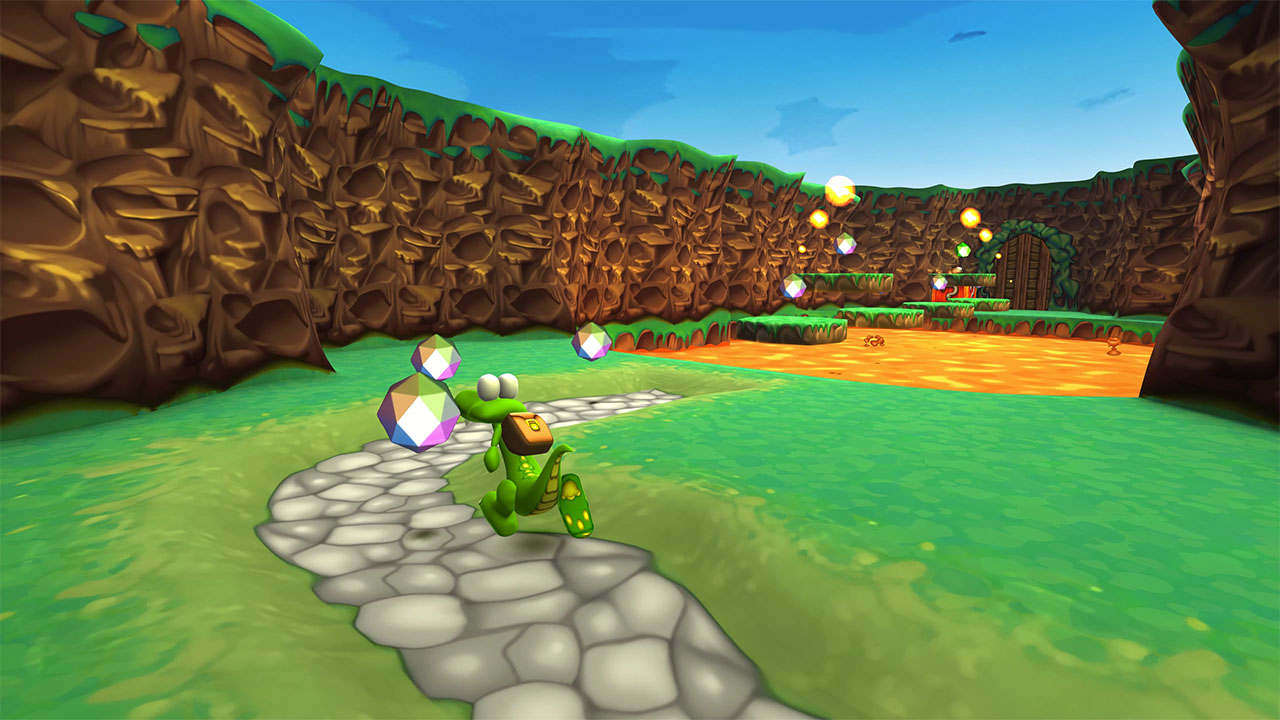Croc: Legend of the Gobbos review for Nintendo Switch
System: Switch
Release date: April 2, 2025
Developer: Argonaut Games
Publisher: Argonaut Games
Croc: Legend of the Gobbos first emerged in 1997 as a 3D platformer developed by Argonaut Software and published by Fox Interactive on the original PlayStation. Originally conceptualized as a Yoshi-centric racing game for Nintendo, it took on a life of its own when that collaboration fell through, leaving us with our adorable and plucky green crocodile set out on an adventure to free the charming little creatures that rescued and reared him. Brown, fuzzy, and cute to boot, the Gobbos are scattered all around the islands and apparently only Croc was spared – leaving him in the best position to start on those rescue efforts.
Upon release, Croc was praised for its vibrant, colorful environments, creatures, and enemies all chock full of danger, as well as being a welcoming game for young players. As one of the earlier attempts at bringing free-roaming 3D platforming to players in the mid-90s—and just a year after the release of Nintendo’s hit Super Mario 64—the console market had just seen new hardware hit store shelves, and developers were starting up across the world at a rapid pace. This was a time when the technology for 3D gaming was still newer, and a lot of studios still preferred 2D endeavors. While it wasn’t as polished as some of its contemporaries like the aforementioned Super Mario 64, Croc holds up really well as an early 3D platformer and serves as an absolutely whimsical window into what gaming was like in 1997.
The narrative of Croc: Legend of the Gobbos is delightfully simple, leaning into fairy tale sensibilities. Croc, just a sweet little baby crocodile, is raised by a peaceful tribe of small, fuzzy creatures called the Gobbos. One day, their world is shattered when the sinister Baron Dante and his minions invade, capturing the Gobbos and leaving Croc as their only hope for salvation. Guided by his courage and a series of floating islands brimming with hazards and puzzles, Croc embarks on a journey to defeat Baron Dante and reunite with his adoptive family. This will involve traipsing through tons of levels of content and boss fights, collecting no shortage of little furry dudes, and filling your pockets (where does he have pockets?) full of gems and jigsaw pieces in your standard collect-a-thon affair.
While the narrative is light on complexity, it embraces a storybook-like quality that suits the game’s aesthetic. Croc’s silent yet expressive personality makes him an endearing lead, while the Gobbos provide an emotional core that keeps players invested in their rescue. Words may not be exchanged, but the expressions and sounds do a fantastic job at conveying the emotions of Croc and his Gobbo tribe, while the devious and villainous Baron Dante cuts an imposing figure. The lead-up to the final battle between our little hero and this trumped-up evil sorcerer is solid, and the fight itself is a harsh challenge even as someone well into adulthood.
Unexpected but not unloved, the remastered version of Croc: Legend of the Gobbos brings an old adventure to Nintendo Switch with a mix of nostalgia and modern expectations. While the original title was known for its (very) clunky controls and camera system, this release makes a notable effort to refine those rough edges. Croc still runs about as if he has skates made out of butter, but the precision of jumping and aiming while in motion will allow players the ability to do complex platforming without too much of a hassle. The early levels are fantastic about introducing new things to the player, and it pays to explore every nook and cranny of an area for bonus areas, gems, and extra lives that lie scattered about for the picking. Take your time getting to know how Croc moves, lands, and jumps, and you will be well on your way to saving your friends and sending Baron Dante and his cronies packing.
Croc looks wonderful on the Nintendo Switch, with frame rate stability generally solid and maintaining a smooth experience in both docked and handheld modes. The visuals, while faithful to the original, have been given a subtle facelift with improved textures and lighting effects that add depth to the world. However, some animations retain their original stiffness, which may feel dated to newcomers. Load times are minimal, making the experience more seamless compared to its PlayStation origins where I could easily go make a sandwich while I waited for levels to load. Textures are smoothed out, but climbable walls are STILL hard to see, even all these years later, and are no shortage of frustration.
The biggest change in this remaster is the reworked control scheme. The original’s tank-like movement has been smoothed out for more intuitive and responsive handling, making jumps and platforming challenges feel less frustrating. The camera has also received an overhaul, offering more fluid control options to help navigate Croc’s world without the constant battle against awkward angles. I loved being able to control the camera and pan around a level so I could plan ahead on where to go and what to get as I took stock of things – a locked door would need a key, and that key could be down this accessible well I’m standing next to… the camera lets you plan, scan for enemies, and strategize. We have to keep our little guy safe after all, as getting hit without any gems in your possession causes Croc to immediately die from what I assume is cardiac arrest—he simply falls over and fades from existence. Dramatic, and I love it.
Visually, the game stays true to its roots while incorporating modern enhancements. Character models have been touched up, environments boast higher-resolution textures, and lighting effects give the game a more polished look without altering what I remember from childhood. Some quality-of-life features have been added, and the old password system was left intact for players who used to roll that way, in the times before memory cards. The Crocipedia is another new inclusion – a collection of painstakingly curated information on the game, its designs, art assets, and more have been brought to us in a digital format we can peruse at our leisure. There’s a lot of behind-the-scenes information about the making of the game, merchandise that was made to help promote it, and more.

My time spent revisiting Croc: Legend of the Gobbos on the Nintendo Switch was honestly a delightful experience, especially as someone with very fond memories of the original release. The remaster retains the spirit of the classic while smoothing out many of its rougher edges. While it may not reach the same heights as genre-defining platformers, its heartwarming charm, improved controls, and nostalgic early polygon graphics make it a worthy addition to any platforming fan’s library. Earning its clout as a much-beloved cult classic, there’s still plenty of fun to be had in Croc’s adventure and plenty of cute little fuzzy guys to save.
Croc: Legend of the Gobbos copy provided by the publisher for the purpose of this review.



